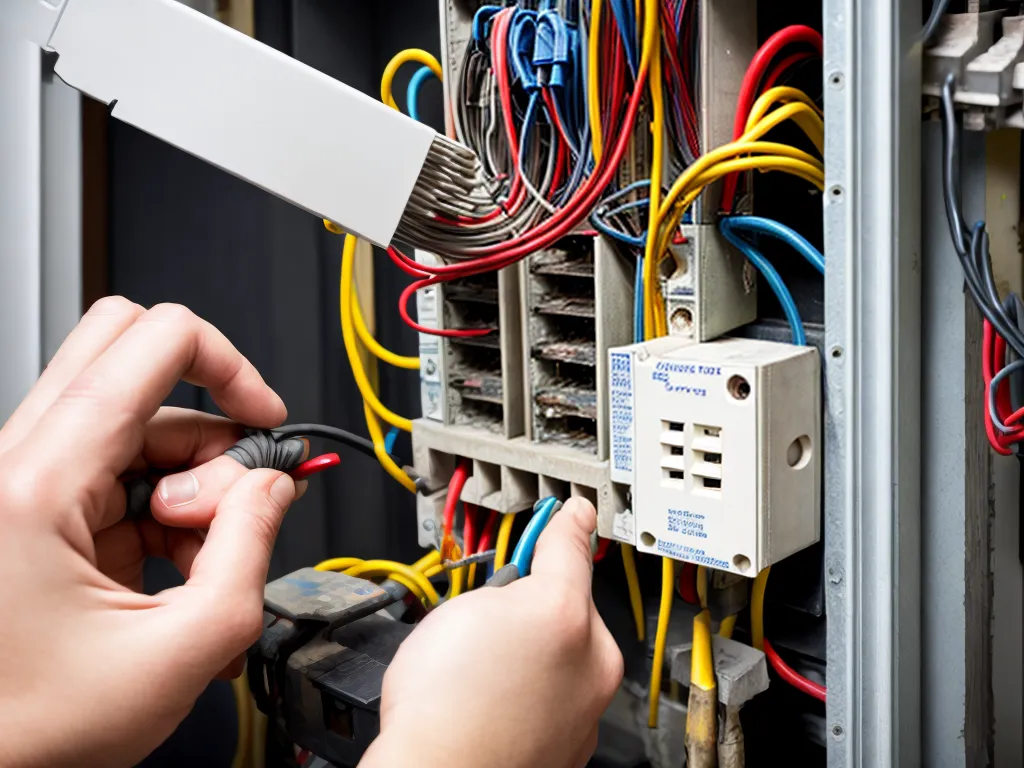
Troubleshooting Tricky Three-Phase Power Problems in Older Buildings
Introduction
As an electrician who often works on older buildings, I frequently encounter tricky issues with three-phase power systems. In this article, I'll provide an in-depth guide to troubleshooting some of the most common three-phase power problems in older buildings.
I'll cover the fundamentals of three-phase power, common issues like phase imbalances and ground faults, and how to systematically track down and resolve problems. By the end, you should have a solid understanding of how to tackle even the trickiest three-phase power issues.
Overview of Three-Phase Power Systems
Before diving into specific issues, let's review some three-phase power basics.
What is Three-Phase Power?
Three-phase power systems use three separate 120V AC power lines, each offset by 120 degrees. This creates a more consistent distribution of power compared to single-phase systems.
Key Advantages:
- More consistent power distribution
- Can power larger equipment and motors
- Uses less conductor material due to lower currents
Three-phase systems are commonly found in commercial and industrial settings powering large equipment like elevators, air conditioners, and factory machinery.
Three-Phase Power in Older Buildings
In older buildings, three-phase systems are generally:
- 208V - Commonly powers lighting and receptacles
- 480V - For powering larger equipment like HVAC systems
These systems were often installed decades ago and have been modified over the years, leading to potential issues today.
Common Three-Phase Power Problems
Now let's review some of the most frequent three-phase power issues in older buildings:
1. Phase Imbalance
A phase imbalance occurs when the loads on the three phases are not equal. This can cause:
- Overheating and damage to equipment
- Circuit breakers tripping
- Reduced motor performance
Causes include:
- One phase being overloaded
- An open circuit on one phase
- Unbalanced single-phase loads
To diagnose, check voltages phase-to-phase and phase-to-neutral. The measurements should be very close on a balanced system.
2. Ground Faults
A ground fault happens when current leaks from a hot conductor to ground. This can pose a serious shock hazard.
Causes include:
- Damaged insulation on wiring
- Moisture in electrical panels or conduits
- Rodent damage to wiring
Check for current on the ground conductors or use a clamp meter to trace down the fault.
3. Harmonics
Harmonics are distortions to the normal voltage waveform, often caused by non-linear loads like VFDs. This can cause:
- Overheating of neutral conductors
- Random circuit breaker tripping
- Equipment damage
Check for harmonics with a power quality analyzer. Installing line reactors or filters may help.
Step-by-Step Troubleshooting Process
With an overview of common issues in mind, let's run through the systematic troubleshooting process I use:
1. Interview Building Manager & Maintenance Staff
The first step is gathering information from the building manager or maintenance staff.
- When did the issue start?
- Any changes/additions to equipment?
- Are there any patterns to the problem?
This background info can provide vital clues.
2. Review Electrical Plans
Study all available electrical plans and single line diagrams. This will give me an understanding of:
- The equipment powered by the system
- Any recent changes
- How panels/circuits are connected
Pay close attention to the three-phase sections.
3. Visual Inspection
Do a thorough visual inspection of all electrical equipment tied to the three-phase system. Look for:
- Signs of overheating
- Damage from rodents/water
- Corroded connections
- Soot in panels indicating arcing
Document any findings with photos. Safety first - use PPE and lockout/tagout.
4. Check Voltages & Currents
Using a multimeter and clamp meter, test key parameters:
- Voltages - Check phase-to-phase and phase-to-neutral
- Current - Measure each phase conductor
- Ground - Check for current on ground
Compare readings across the three phases.
5. Monitor Power Quality
Hook up a power quality analyzer to monitor over time. Check for:
- Harmonics - Severe distortion indicates harmonics
- Power factor - Low power factor suggests unbalanced loads
- Flicker - Fluctuations can point to loose connections
Data gathered over days/weeks may reveal patterns.
6. Isolate the Problem Area
Now narrow down where the issue originates using breakers and disconnects.
- Open/close breakers methodically to pinpoint problem circuit
- Disconnect equipment sections to isolate problem loads
- Check voltages & currents after each change
Zero in on the specific location.
7. Implement Fixes
Once the root cause is found, take corrective action:
- Balance single-phase loads
- Replace damaged wiring/equipment
- Install harmonic filters
- Rewire to dedicated neutral per phase
Confirm normal voltages & currents after repairs are complete.
Key Takeaways
Troubleshooting three-phase issues in older buildings requires an understanding of common problems like phase imbalances and ground faults. A systematic process of gathering background data, thorough inspections, power quality measurements, and selective isolation can help zero in on the root cause. With the right knowledge and methodical approach, even tricky three-phase problems can be resolved. Let me know if you have any other questions!